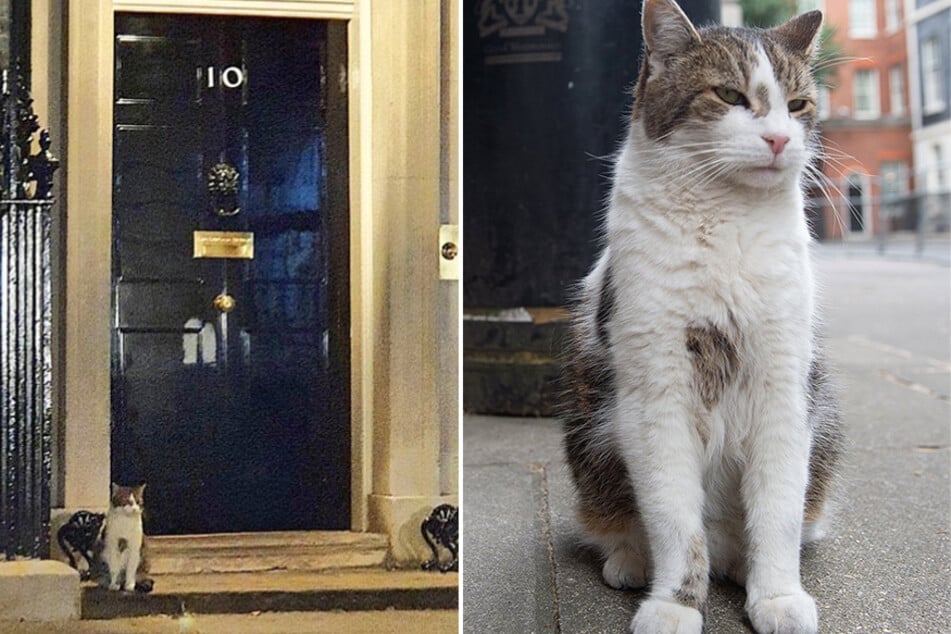뉴스&스피킹(영자신문)
하루 10분이면 영어에 대한 두려움을 극복하고 누구나 유창하게 영어를 구사하실 수 있습니다.
-
 Korean Air Takes Instant Noodles Off the Menu For many years, cups of instant noodles have been a favorite among Korean Air passengers. However, they will no longer be available for economy-class travelers starting August 15, said a spokesperson for the Seoul-based airline.
Korean Air Takes Instant Noodles Off the Menu For many years, cups of instant noodles have been a favorite among Korean Air passengers. However, they will no longer be available for economy-class travelers starting August 15, said a spokesperson for the Seoul-based airline.
Korean Air said its decision was a safety measure to deal with increased turbulence, “aimed at preventing burn accidents.” Turbulence, or irregular movements from up and down air currents, can cause the hot cups of noodles to spill.
In addition to regular meals, instant noodles are currently part of Korean Air’s self-service food, for economy passengers on long trips. In this week’s announcement, the airline added that it will offer other food items for economy travelers. The new offerings include sandwiches, corn dogs, and hot pockets.
However, business-class and first-class passengers will still get their noodles. Korean Air told the BBC that the noodles are brought individually to business-class and first-class travelers. This reduces the risk of spills and burns.
Concern about the dangers of serving hot food and liquids on airplanes is not new. Over the years, several airlines have faced legal actions from travelers who say they suffered serious burns after having hot coffee, for example, spilled on them during a flight.
In 2019, the European Union’s highest court ruled that an airline can be held responsible if a passenger is injured in this way. This is the case even if turbulence or other flight-related reasons did not cause the spill.
But turbulence, of course, still adds to the risk. Flying through unstable air can make balancing something like hot soup or drink much more difficult.
Several turbulence-related injuries have been reported over the years. But most injuries are minor. And airlines have made continuous improvements in reducing the number of in-flight accidents. Those include stopping service when needed or taking extra care when giving out certain drinks.
Still, rough air might be getting harder and harder to avoid. Weather and airline experts note increasing reports of turbulence. They point to the possible effects climate change may have on flying conditions.
I’m Anna Matteo.View -
 When Is Two Too Many? When It's a 'Double Whammy'! And now, Words and Their Stories, from VOA Learning English.
When Is Two Too Many? When It's a 'Double Whammy'! And now, Words and Their Stories, from VOA Learning English.
On this program, we explore words and expressions in the English language. We give definitions, examples and notes on usage.
Today we talk about a word with an unusual history – whammy. A whammy can be a magical spell that brings bad luck. It can also be an attack or a damaging, destructive blow. A blow is an incident or event that hits you hard.
So, one whammy is bad. But what happens when you have two?
That is called a double whammy.
People traditionally say they have been hit with a double whammy!”
The online dictionary Merriam-Webster defines a double whammy as a combination of two usually unfavorable forces, circumstances, or effects. Two bad things happen at the same time to make something really unpleasant or difficult.
It can also mean that two bad things happen consecutively, or one after the other.
The origin of the expression is unclear. Some guess it comes from taking the word “wham” which describes a hard punch or blow and adding a -y ending which makes it sound funny.
Others say the cartoonist Al Capp popularized the word whammy in his 1950s comic strip Li’l Abner. A character named Evil-Eye Fleegle could stop someone by simply looking at them. The single whammy was a look with one eye, and the feared double whammy used both eyes.
Now, let’s listen to the expression used in a sentence.
Today, my friend Jonah lost his job. And then, on the way home, he fell and broke his leg. Talk about a double whammy! It has NOT been his best day.
Here is another example of the expression double whammy.
On their 3-hour hiking trip, the friends were hit with a double whammy. The first was a bad rainstorm. They were forced to take shelter in a cave. Then they realized the second bad thing. They left all their food and water in the car.
There is another English expression that has a similar meaning – a one-two punch. The first punch is a difficult blow to take, but then the second one aims to finish the job. The expression comes from boxing where one punch is quickly followed by another from the other fist, or closed hand.
A boxer using a one-two punch is trying to knock out their opponent or to score points.
Both double whammy and one-two punch are informal expressions. One-two punch might be less popular than it once was. But double whammy appears in some surprising places in both American and British English.
And that’s Words and Their Stories. Until next time … I’m Anna Matteo.
Anna Matteo wrote this lesson for VOA Learning English.View -
 One Person's Trash Is Another Person's Treasure And now, Words and Their Stories, from VOA Learning English.
One Person's Trash Is Another Person's Treasure And now, Words and Their Stories, from VOA Learning English.
People around the world share many things in common. But we are also different from each other. Not only do we look, think, and act differently, but we also like different things. Even identical twins may look the same but are very different individuals.
On today’s program, we will look at a few expressions to describe how no person is exactly the same as another.
The first expression involves trash and treasure.
When we say one person's trash is another person's treasure, we mean that something that one person may consider worthless could be highly prized or valued by someone else.
Let’s hear an example of how to use this expression:
A: I really don't understand the appeal of Jackson Pollock’s paintings. To me, they look like a team of monkeys painted them!"
B: I love Pollock’s paintings. I see something new every time I look at them.
A: Well, I guess it's true what they say, one person's trash is another person's treasure.
Now, rubbish and garbage mean the same as trash. But, in this expression, we use trash because the “tr” in trash and treasure makes the expression sound more natural. It just sounds better.
And, sometimes, we use the word "man" in place of "person" such as one man’s trash is another man’s treasure. Again it is just easier to say.
Another expression with a similar meaning is different strokes for different folks.
This also means that different things appeal to different people. But as a set expression, we do not say “different strokes for different people.” That just doesn't sound right.
Different strokes for different folks can also mean that people live in different ways and value different things.
For example, a perfect evening for my friend is to go out and dance all night long. For me, a perfect evening is to stay at home with a book and a cup of tea. Neither is a better way to spend the evening. So, we should not judge. Or in other words, different strokes for different folks.
When we want to say that we are all different and we like different things without judgment, we can also use the following expressions:
It takes all kinds to make the world go round.
It takes all kinds.
To each his (her) own.
Whatever floats your boat.
They all mean … whatever makes you happy!
And all of these expressions have the same general meaning: We are all different and unique.
And that’s the end of this Words and Their Stories. Until next time, I’m Anna Matteo.
Anna Matteo wrote this lesson for VOA Learning English.View -
 European Parent Groups Aim to Ban Smartphones for Teens If parents say "no" when a child asks for a smartphone, the response they are likely to hear is, "Everyone has one. Why can't I?"
European Parent Groups Aim to Ban Smartphones for Teens If parents say "no" when a child asks for a smartphone, the response they are likely to hear is, "Everyone has one. Why can't I?"
But what would happen if the child’s friends did not have a mobile phone either?
That is the way that some parents in Europe are thinking.
They are concerned by evidence that smartphone use among young children threatens their safety and mental health. They believe that the more parents join their movement, the more powerful their ideas become.
Parents in Spain, Britain and Ireland are using social media groups on services like WhatsApp and Telegram to talk about their plans. They want to keep smartphones out of schools. But for their plan to work, other parents have to refuse to buy children the devices before — or even into — their teenage years.
Elisabet García Permanyer got involved after she talked with another parent in a Barcelona park. Last year, she started a social media group to share information on the dangers of the internet with families at her children’s school.
The group, called "Adolescence Free of Mobile Phones," quickly grew and now includes over 10,000 members. The most involved parents are asking other parents to agree not to get their children smartphones until they are 16.
"When I started this, I just hoped I would find four other families who thought like me, but it took off and kept growing, growing and growing," García Permanyer said. "My goal was to try to join forces with other parents so we could push back the point when smartphones arrive. I said, 'I am going to try so that my kids are not the only ones who don't have one.'"
Spain
Police and public health experts have also been voicing concerns about the kind of materials that children can see on their mobile devices. Spain's government took note of the problem and banned smartphones from elementary schools in January. Now they can only be turned on in secondary school, which starts at age 12, if a teacher deems it necessary for an educational activity.
Britain
In Britain last year, a 16-year-old girl named Brianna Ghey was killed by two teenagers. Her mother demanded that social media on smartphones be limited for children under 16.
Mother Daisy Greenwell, who lives in the area of Suffolk, England, and a friend, Clare Reynolds, set up a social media group called Parents United for a Smartphone-Free Childhood. It grew quickly and an organizer said it now has groups in every British county.
Ireland
In Greystones, Ireland, eight primary school leaders, or principals, wrote to parents, asking them not to buy their students smartphones. Then the parents themselves voluntarily signed written agreements, promising not to let their young children have the devices.
Thirty-eight-year-old Christina Capatina is a Greystones parent of two young daughters. She signed the agreement and said there were almost no smartphones in schools this school year.
Unity is powerful
Studies from Spain, Britain, and Ireland show that by the time children are 12, most have smartphones. In Spain, 25 percent of children have a cellphone by age 10, and almost 50 percent by age 11. At 12, this share rises to 75 percent. British media regulator Ofcom said 55 percent of children in Britain owned a smartphone between ages eight and 11, with the figure rising to 97 percent by age 12.
Over recent years, organizations, governments, and parents have been reporting that smartphone use by children is linked to bullying, mental health problems and loss of the focus necessary for learning. China moved last year to limit children's use of smartphones. France has a ban on smartphones in schools for children aged six to 15.
The possible dangers have produced school bans on smartphones and online safety laws. But those measures do not deal with what children do outside of school with mobile phones. Parents and schools that have pushed for changes in their communities saw that it became possible the moment they understood that they were not alone.
Rachel Harper is principal of St. Patrick's National School in Greystones. Harper wants parents to work with their local school to organize phone bans. She said, "There's a bit more strength that way, in that all the parents in the area are talking about it."
I’m Jill Robbins.
And I’m Mario Ritter.View -
 In So Many Places, Cats Are the Stars From the United States and Britain to Russia and South America, cats often appear in famous public places.
In So Many Places, Cats Are the Stars From the United States and Britain to Russia and South America, cats often appear in famous public places.
Cat fans say the animals bring value to the places where they live. Cats can add a cute element or reduce the number of rodents. Sometimes, cats even come to define the place they live in.
Cats in the United States
In 2020, a green-eyed cat named Willow appeared at a Joe Biden campaign event in Pennsylvania. The cat jumped onstage and left with soon-to-be first lady Jill, who later wrote a book about the creature.
But the White House is not the only well-known place in the United States to house cats.
The Hemingway Homes and Museum, in Key West, Florida has fifty-nine cats that move freely through the estate. Half of the creatures are related to Hemingway’s own six-toed cat, Snow White.
Visitors are kept away from the furniture, but the animals sit on the writer’s desk. A large “Cat Bible” shows the family history, or lineage, of the resident cats.
Alexa Morgan of the Hemingway museum said the cats bring extra public interest.
“We have visitors that come here for Hemingway, and then once they see the cats and they love them, then it’s like they visit again so they can come back and see the cats,” she said.
Cats in Britain
In Britain, there is Lilibet.
She is a Siberian Forest cat who spends time sitting by the fire at the Lanesborough Hotel in London. Plenty of people visit the hotel just to see the cat, who is named after Queen Elizabeth II, said managing director Stuart Geddes.
Lilibet has special hair known as hypoallergenic fur. That means her hair is not likely to cause problems for people who are sensitive to cat hair. Lilibet is not the only cat living in an important British building.
Hodge sits inside Southwark Cathedral, which was established in 1106. He moves around bringing happiness to visitors and going into the shop for treats.
Not far away, across the Thames River, is Larry, the famous cat of 10 Downing St., the official home of the prime minister of Britain. Larry has stayed longer than most prime ministers — Kier Starmer is his sixth.
Employed as Chief Mouser to the Cabinet Office, Larry pays his way by keeping the prime minister’s office and home more cat than mouse.
He has lasted longer than his rival Palmerston, a previous Foreign Office cat who retired to the British countryside in 2020.
Russia and beyond
Cats also live in the Hermitage Museum in Saint Petersburg, Russia.
About 80 cats get to call Catherine the Great’s palace home in return for keeping the pest population down. They have their own press officer and volunteer assistants, who keep them publicized, fed, and watered while they walk around Russia’s state museum.
In Venezuela, under a banner of Hugo Chavez, an unnamed cat has become well-known to the journalists of Caracas. Often found moving near TV crews at the National Electoral Council, this mysterious animal keeps reporters company as they wait for updates.
Far away in another part of the world, Lule is so beloved at the Day and Night bar in Pristina, Kosovo, that her cat face has become its symbol. Owner Genc Salihu says she is part of the family, and people come just to see and pet Lule.
“She is very much the soul of this place,” he said.
I’m John Russell.View

